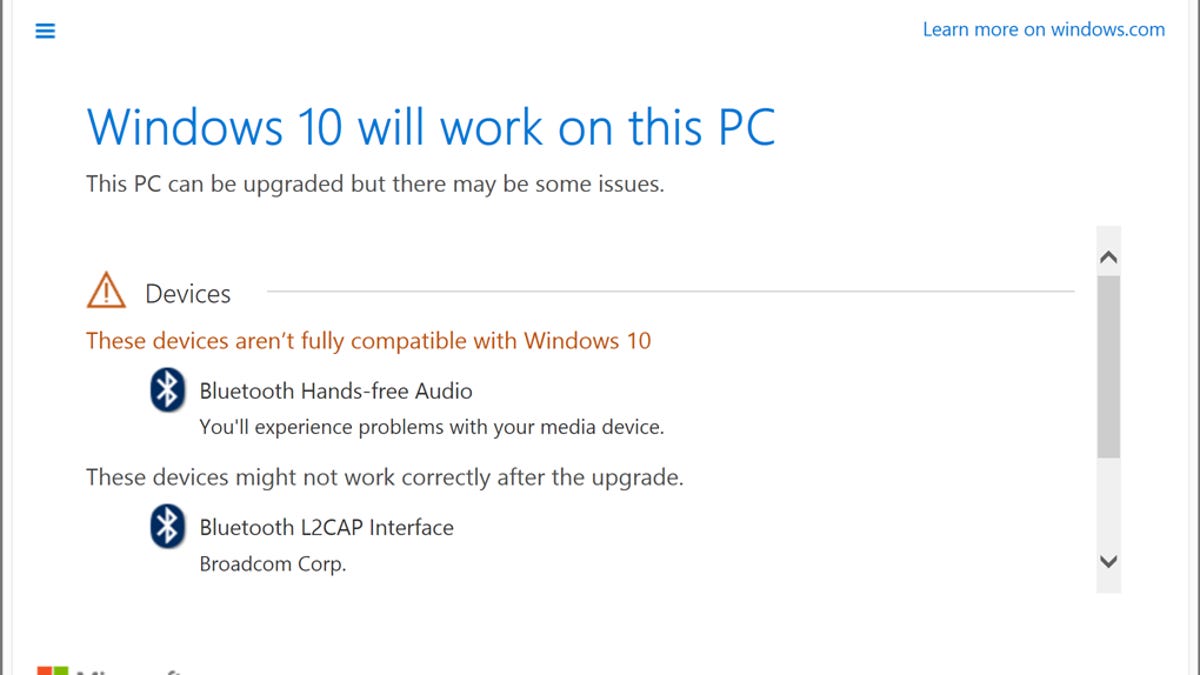How do I know if I have problems with Windows 10?
Summary of the Article
Select Start > Settings > Update & Security > Troubleshoot, or select the Find troubleshooters shortcut at the end of this topic. Select the type of troubleshooting you want to do, then select Run the troubleshooter. Allow the troubleshooter to run and then answer any questions on the screen.
Check your device performance and health in Windows Security. In the search box on the taskbar, type Windows Security, and then select it from the results. Select Device performance & health to view the Health report.
The common problems in Windows 10 include slow performance issues, security issues, update errors, blue screen of death (BSOD), driver issues, system crashes & freezes, network connectivity problems, and printer problems.
According to reports, the latest Windows 10 update, released on May 9, is causing serious problems for some people.
To diagnose computer problems, you can determine the who, what, and when of the issue you’re experiencing, consult Google, reboot your computer, check connections, look for program updates, close background tasks, clean up your hard drive, and run an antivirus program.
Yes, Windows 10 does have a built-in repair tool that helps you troubleshoot typical PC issues.
To run a diagnostic test on your computer, go to Settings > Update & Security > Troubleshoot. Choose a troubleshooter for your problem.
To check computer health, type DISM.exe /Online /Cleanup-image /Restorehealth (note the space before each “/”), and then press Enter. After you see a message that says “The operation completed successfully,” type sfc /scannow (note the space between “sfc” and “/”) and press Enter.
To diagnose Windows problems, go to Start, then select Settings > Privacy > Diagnostics & feedback or Settings > Privacy & security > Diagnostics & feedback.
Signs of a hardware issue include slow downloads, blue screen of death, corrupt files, slow access to files, sudden computer shut-off, graphics errors, and unusual noises.
If you don’t update Windows 10, your computer could become more vulnerable to security risks and viruses because you won’t receive new security updates or other quality updates.
Questions and Detailed Answers
1. How do I check for problems on Windows 10?
Select Start > Settings > Update & Security > Troubleshoot, or select the Find troubleshooters shortcut at the end of this topic. Select the type of troubleshooting you want to do, then select Run the troubleshooter. Allow the troubleshooter to run and then answer any questions on the screen.
2. How do I run a health check in Windows 10?
Check your device performance and health in Windows Security. In the search box on the taskbar, type Windows Security, and then select it from the results. Select Device performance & health to view the Health report.
3. What are the common problems in Windows 10?
The common problems in Windows 10 include slow performance issues, security issues, update errors, blue screen of death (BSOD), driver issues, system crashes & freezes, network connectivity problems, and printer problems.
4. Which Windows 10 update is causing problems?
According to reports, the latest Windows 10 update, released on May 9, is causing serious problems for some people.
5. How can I diagnose computer problems?
To diagnose computer problems, you can determine the who, what, and when of the issue you’re experiencing, consult Google, reboot your computer, check connections, look for program updates, close background tasks, clean up your hard drive, and run an antivirus program.
6. Does Windows 10 have a built-in repair tool?
Yes, Windows 10 does have a built-in repair tool that helps you troubleshoot typical PC issues.
7. How do I run a diagnostic test on my computer?
To run a diagnostic test on your computer, go to Settings > Update & Security > Troubleshoot. Choose a troubleshooter for your problem.
8. What is the command to check computer health?
To check computer health, type DISM.exe /Online /Cleanup-image /Restorehealth (note the space before each “/”), and then press Enter. After you see a message that says “The operation completed successfully,” type sfc /scannow (note the space between “sfc” and “/”) and press Enter.
9. How do I diagnose Windows problems?
To diagnose Windows problems, go to Start, then select Settings > Privacy > Diagnostics & feedback or Settings > Privacy & security > Diagnostics & feedback.
10. How do I know if my computer has problems?
Signs of a hardware issue include slow downloads, blue screen of death, corrupt files, slow access to files, sudden computer shut-off, graphics errors, and unusual noises.
11. What happens if I don’t update Windows 10?
If you don’t update Windows 10, your computer could become more vulnerable to security risks and viruses because you won’t receive new security updates or other quality updates.

How do I check for problems on Windows 10
Select Start > Settings > Update & Security > Troubleshoot, or select the Find troubleshooters shortcut at the end of this topic. Select the type of troubleshooting you want to do, then select Run the troubleshooter. Allow the troubleshooter to run and then answer any questions on the screen.
How do I run a health check in Windows 10
Check your device performance and health in Windows SecurityIn the search box on the taskbar, type Windows Security, and then select it from the results.Select Device performance & health to view the Health report.
Cached
What are the common problems in Windows 10
14 Most Common Windows 10 Problems and their SolutionsSlow Performance Issues.Security Issues.Update Errors.Blue Screen of Death (BSOD)Driver Issues.System Crashes & Freezes.Network Connectivity Problems.Printer Problems.
Which Windows 10 update is causing problems
Several readers have contacted us to say they have been experiencing problems after installing Windows 10 May 2023 Update. According to reports, the latest Windows 10 update, released on May 9, is causing serious problems for some people.
How can I diagnose computer problems
DIY: How to Troubleshoot a ComputerWhat's Wrong Determine the who, what, and when of the issue you're experiencing.Consult Google.Reboot.Check Connections.Look for Program Updates.Close Background Tasks.Clean Up Your Hard Drive.Run an Antivirus Program.
Does Windows 10 have a built in repair tool
Answer: Yes, Windows 10 does have a built-in repair tool that helps you troubleshoot typical PC issues.
How do I run a diagnostic test on my computer
How Do I Run a Diagnostic Test on My ComputerOn Windows 10, go to Settings > Update & Security > Troubleshoot. On Windows 11, go to Start > Settings > System > Troubleshoot.Choose a troubleshooter for your problem. Options include Bluetooth, Keyboard, Windows Update, and Internet Connections.
What is the command to check computer health
Type DISM.exe /Online /Cleanup-image /Restorehealth (note the space before each "/"), and then press Enter. (Note: This step may take a few minutes to start and complete.) After you see a message that says "The operation completed successfully," type sfc /scannow (note the space between "sfc" and "/") and press Enter.
How do I diagnose Windows problems
Do one of the following: Go to Start , then select Settings > Privacy > Diagnostics & feedback. Go to Start , then select Settings > Privacy & security > Diagnostics & feedback.
How do I know if my computer has problems
Signs of a hardware issueSlow downloads.'Blue screen of death' or equivalent.Corrupt files.Slow access to files.Sudden computer shut-off.Graphics errors (for example, computer screen is jumbled)Unusual noises.
What happens if I dont update Windows 10
Your computer will still work, but it could become more vulnerable to security risks and viruses because you won't receive new security updates or other quality updates.
What is the most recent update for Windows 10
The final version of Windows 10 is version 22H2, which will reach end of servicing on October 14, 2025.
How do I run a full diagnostic on my computer
How Do I Run a Diagnostic Test on My ComputerOn Windows 10, go to Settings > Update & Security > Troubleshoot. On Windows 11, go to Start > Settings > System > Troubleshoot.Choose a troubleshooter for your problem. Options include Bluetooth, Keyboard, Windows Update, and Internet Connections.
What are 3 ways you can troubleshoot your computer
7 general tips for troubleshooting computer problemsTurn it off, and then turn it on again.If you don't know something, ask!Start with simple fixes, and then rule out possibilities from there.Check your device connections.Boot your computer in Safe Mode.Keep your programs up-to-date.
How do I fix a corrupted Windows 10 operating system
Run the System File Checker tool (SFC.exe)Open an elevated command prompt. To do this, do the following as your appropriate:If you are running Windows 10, Windows 8.1 or Windows 8, first run the inbox Deployment Image Servicing and Management (DISM) tool prior to running the System File Checker.
Can I repair Windows 10 without losing anything
Use the installation media to reinstall Windows 10
Select Change to determine what to keep: Select one of the following options, and then select Next: Keep personal files and apps – This will preserve your personal data, apps, and settings.
Is there a Windows 10 repair tool
Answer: Yes, Windows 10 does have a built-in repair tool that helps you troubleshoot typical PC issues.
How do I scan my computer for problems
Right-click CMD.exe and select Run as Administrator. On the User Account Control (UAC) prompt, click Yes. In the command prompt window, type SFC /scannow and press Enter . System file checker utility checks the integrity of Windows system files and repairs them if required.
How do you run a diagnostic test on your computer
In Windows 10, go to Start , then select Settings > Privacy > Diagnostics & feedback.
How do I run a Virus check on my computer
Run a quick scan in Windows SecuritySelect Start > Settings > Update & Security > Windows Security and then Virus & threat protection. Open Windows Security settings.Under Current threats, select Quick scan (or in early versions of Windows 10, under Threat history, select Scan now).
How do I run a diagnostic on my computer
How Do I Run a Diagnostic Test on My ComputerOn Windows 10, go to Settings > Update & Security > Troubleshoot. On Windows 11, go to Start > Settings > System > Troubleshoot.Choose a troubleshooter for your problem. Options include Bluetooth, Keyboard, Windows Update, and Internet Connections.
What are the 5 common computer problems
What Are 5 Common Computer Problems & SolutionsAn Application Keeps Crashing or Won't Open.Slow Or No Internet Connection.No Accessibility To Email.Encountering A Hardware Issue.Unsure Of Whether To Open A Suspicious Email.
What are three common computer problems
Top 10 Most Common Computer ProblemsThe Computer Won't Start. A computer that suddenly shuts off or has difficulty starting up could have a failing power supply.The Screen is Blank.Abnormally Functioning Operating System or Software.Windows Won't Boot.The Screen is Frozen.Computer is Slow.Strange Noises.Slow Internet.
Is it necessary to update Windows 10 to 11
But if you're still hesitant, there's really no reason why you should upgrade to Windows 11 right away. As long as you're on Windows 10, you'll have access to many of Windows 11's key features (like Auto HDR and virtual desktops) as well as critical updates and security patches through 2025.
Do I really need Windows 10 updates and why
Windows 10 brings you improved versions of the features you love in a familiar, easy-to-use package. With Windows 10 you can: Get comprehensive, built-in, and ongoing security protections to help keep you and your family safe. Connect across devices to bring your favorite apps and files with you, anytime, anyplace.



0 Comments